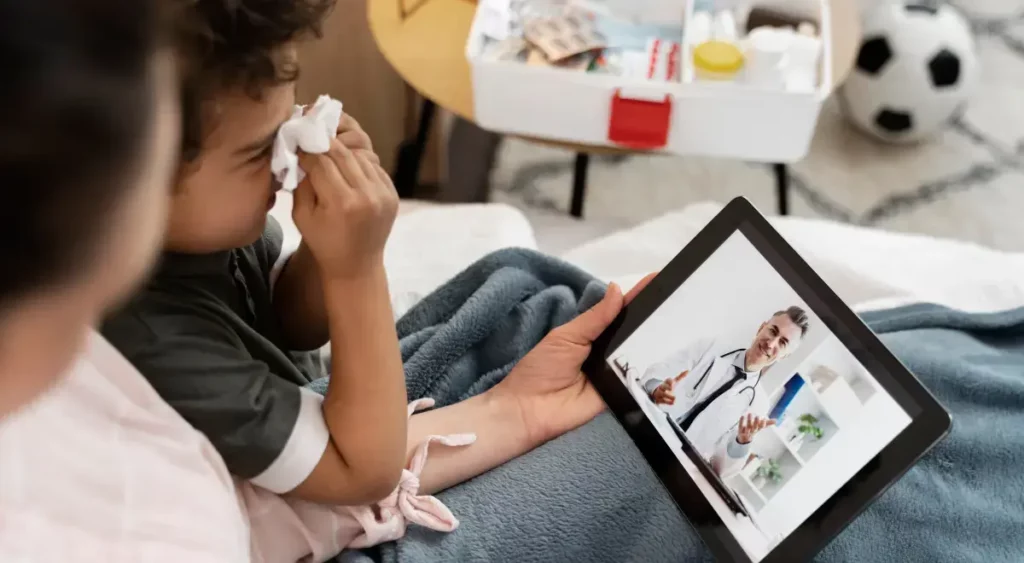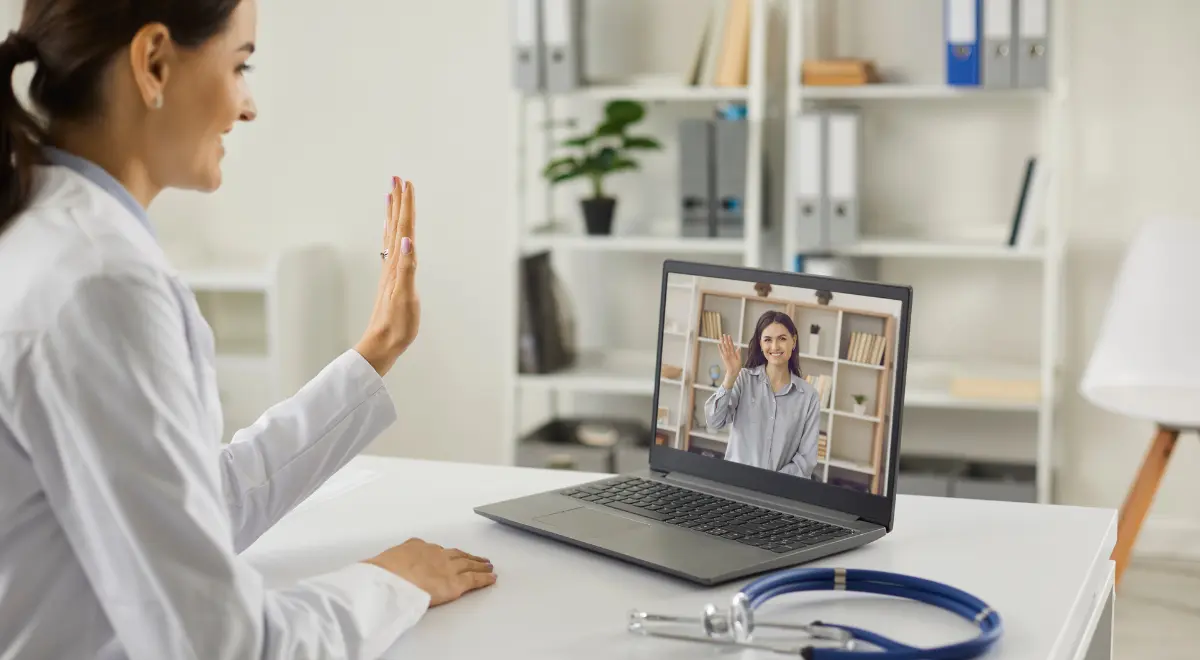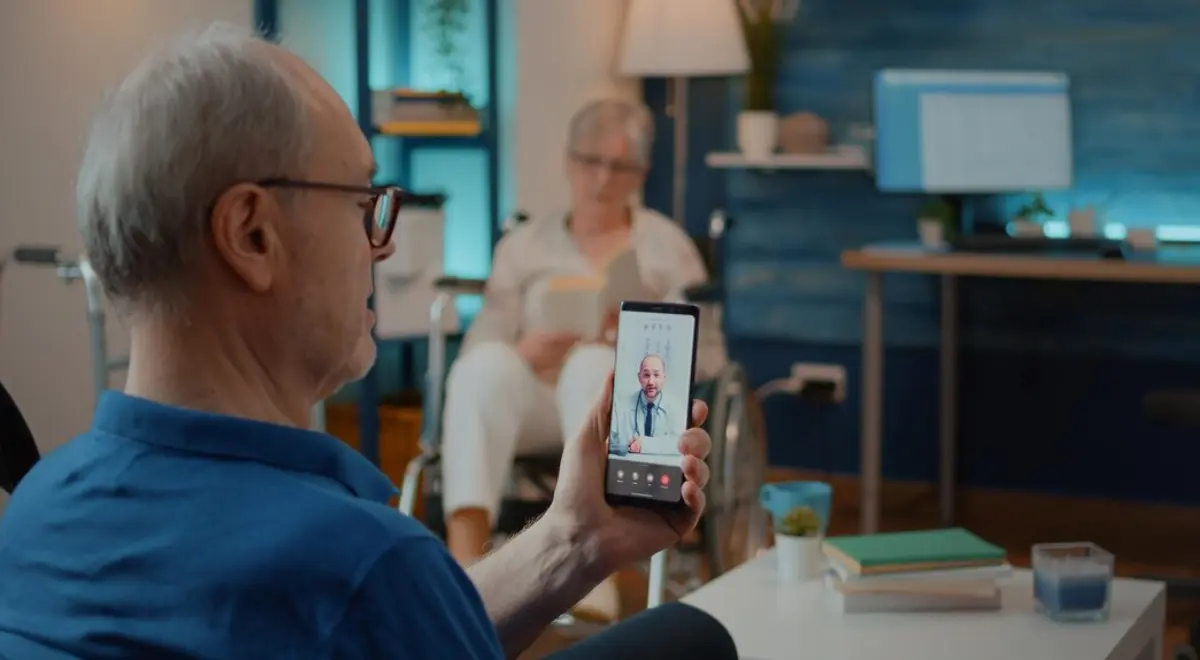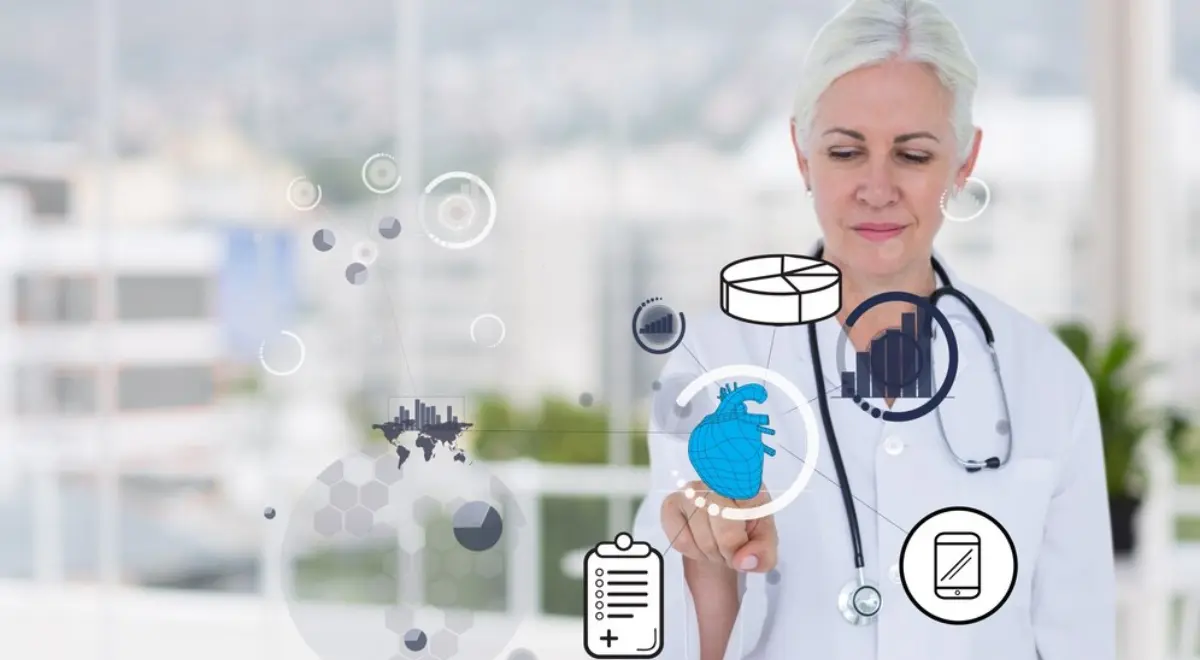8 Remote Patient Monitoring (RPM) Trends for 2024

As a seasoned healthcare provider, you’re intimately familiar with the challenges of managing a substantial caseload of chronic disease patients.
Every day, you face the demanding task of managing a heavy workload with limited resources. This routine, crucial to patient care, often seems overwhelming and inefficient as you strive to provide the best care to each individual.
Their care demands regular monitoring – vital signs, symptom progression, and medication adherence.
It’s now 2024, and the landscape of patient care is evolving rapidly, with Remote Patient Monitoring (RPM) SaaS platforms at the forefront of this transformation.
In this blog, we’ll dive into the 8 key RPM trends for 2024, equipping you with the knowledge to enhance your practice and elevate the level of care you provide.
Table of Contents
ToggleHow Does a Remote Patient Monitoring Systems Work?
Remote Patient Monitoring (RPM) SaaS platforms function as an integrated network, connecting various aspects of patient care. Here’s a closer look at how they operate:
1. Data Collection
The system begins by collecting patient data through connected remote patient monitoring devices, utilizing advanced remote patient monitoring software to track complex health metrics.
This includes vitals like – blood glucose levels, heart rate, weight and other relevant health indicators, providing a comprehensive overview of each patient’s health status.
2. Integration with EHRs
They are designed to be compatible with a wide array of EHR systems, ensuring that patient information is centralized, easily accessible, and actionable.
This will help to produce practical and informed remote patient monitoring solutions.
3. Real-Time Alerts and Monitoring
One of the key functionalities of RPM platforms is the ability to provide real-time alerts to care coordinators and physicians.
This is especially crucial as alerts facilitate swift intervention in cases of abnormal readings, encompassing a range of chronic monitoring, like remote blood pressure monitoring, heart rate monitoring and others.
The system promptly notifies the healthcare team, allowing for immediate action and timely intervention.
4. Multi-Condition Support
These platforms elevate healthcare standards and enable you to address patients’ needs comprehensively.
They offer robust disease-specific views that clinicians can effortlessly switch between, covering a wide range of conditions such as Type 2 Diabetes, Heart Failure, Liver Disease, Cardiovascular Disease, Pulmonary Disease, Obesity, and many others.
This flexibility allows healthcare providers to effectively manage and monitor patients with different health conditions, ensuring a holistic approach to care.
5. Clinical Decision Support
By analyzing the collected data, the system offers clinical decision support, one of the key benefits of remote patient monitoring.
It processes patient data to provide healthcare professionals with actionable insights, aiding in timely and effective patient care. This not only enhances patient outcomes but also enhances the efficiency of managing chronic conditions.
6. Communication Channels
The system also includes communication modules, allowing for direct interaction with patients via SMS, audio, or video. This feature facilitates better patient engagement and adherence to treatment plans.
7. Data Security and Privacy
Finally, these platforms are designed with a strong focus on data security and privacy. They employ robust measures to protect patient information, adhering to healthcare compliance standards like HIPAA.
8 RPM Trends to Watch in 2024
Whether you’re currently utilizing RPM technology or contemplating a new system, understanding the latest trends is vital. Here are eight trends you must know:
1. Advanced Wearable Technologies
The wearables of 2024 are far beyond basic step counters. They’re now equipped with sensors for advanced biometrics like oxygen saturation, skin temperature, and even stress levels, offering a comprehensive view of a patient’s physiological state.
These RPM devices are increasingly being used for early detection of exacerbations in chronic conditions like COPD or heart failure, enabling preemptive care strategies.
2. AI and Machine Learning Integration
AI in RPM is now moving towards predictive analytics, not just reactive data interpretation.
Machine learning algorithms are being refined to analyze patterns in vast datasets, predicting patient-specific health risks and suggesting personalized intervention strategies.
This technology is particularly transformative in managing diseases with complex variables, like diabetes, where it can predict glycemic control issues before they occur.
3. Increased Patient Engagement
Patient engagement tools are evolving to include more interactive and immersive technologies. We’re seeing the rise of gamification in health, VR/AR for patient education, and AI-driven personalized health nudges.
These tools are designed to increase patient adherence to treatment plans and lifestyle changes, crucial for chronic disease management.
4. Enhanced Data Security
Data security in RPM now involves advanced encryption algorithms and blockchain technology for secure data sharing.
This not only protects patient data but also facilitates a more secure and efficient exchange of information between different healthcare systems, enhancing collaborative care.
5. Telehealth and RPM Convergence
The convergence of telehealth and RPM is leading to more cohesive care models. Telehealth platforms are integrating RPM data to provide clinicians with a more holistic view during virtual consultations.
This integration is proving essential in managing complex cases, where continuous monitoring and regular virtual check-ins can significantly impact patient outcomes.
6. Expansion in Chronic Disease Management
RPM’s role in chronic disease management is expanding to include more nuanced condition-specific modules.
For instance, RPM for heart failure patients now often includes advanced fluid status monitoring, while diabetes management may integrate continuous glucose monitoring with insulin pump data.
7. Insurance and Reimbursement Policies
There’s a shift towards value-based care models in insurance, with reimbursements increasingly tied to patient outcomes and RPM efficiency.
This trend is encouraging the adoption of more advanced RPM systems that can demonstrate tangible improvements in patient health metrics.
8. Global Adoption and Localization
RPM is seeing a surge in global adoption, with systems being tailored to local healthcare needs and regulations.
This includes language-specific interfaces, customization for regional health challenges, and compliance with local data protection laws.
Embracing the Future of Healthcare with RPM
The healthcare landscape in 2024 has undergone a remarkable transformation, with RPM playing a central role in driving this change.
This shift extends beyond technology; it represents a fundamental transition towards personalized, predictive, and integrated patient care.
RPM not only enhances patient care but also optimizes healthcare workflows, streamlining processes and ensuring more efficient delivery of care. This holistic approach empowers healthcare providers to make better-informed decisions while improving the overall patient experience.
For healthcare professionals, adapting to these advancements is not just a necessity but an opportunity to enhance patient outcomes and operational efficiency.
Choosing the Right RPM Platform Is the Key!
In this evolving environment, the choice of an RPM SaaS platform is critical. The ideal platform should align with your requirements and emerging trends while offering a secure, user-friendly experience for both patients and healthcare providers. This is where choosing a platform like HealthArc can be a game-changer.
Why HealthArc Stands Out?
HealthArc distinguishes itself with advanced integration capabilities, comprehensive support for various chronic conditions, a dedicated customer support team and a steadfast commitment to data security and privacy.
It represents an ideal solution for healthcare professionals aiming to leverage the full potential of RPM.
Speak with the HealthArc team to explore remote patient monitoring for your organization: +1 201 885 5571. Learn more about HealthArc and its benefits for your practice.
Bottom Line: The Future is Integrated Care
Remember, the future of healthcare is not just about adopting new technologies; it’s about integrating these technologies for compassionate and efficient patient care.
With the right tools like HealthArc, the potential to enhance patient health and practice efficiency is immense. Embrace these tools and lead the way in innovative patient care.
Most recent blogs
Categories
- Behavioral Health Integration
- Cellular Remote Patient Monitoring
- Chronic Care Management
- Chronic Care Management Billing
- Chronic Care Management CPT Codes
- Chronic Care Management Program
- Chronic Care Management Software
- Digital Health Platform
- Principal Care Management
- Principal Care Management CPT Codes
- Remote Monitoring Devices
- Remote Patient Care
- Remote Patient Monitoring
- Remote Patient Monitoring Billing
- Remote Patient Monitoring CPT Codes
- Remote Patient Monitoring Devices
- Remote Patient Software
- Remote Therapeutic Monitoring
- Remote Therapeutic Monitoring Billing
- Remote Therapeutic Monitoring CPT Codes
- Telemedicine & RPM
- Transitional Care Management
- Transitional Care Management Billing
- Transitional Care Management CPT Codes
Related Posts
- July 23, 2024 | Read Time: 8 mins
HealthArc Vs. Prevounce: Which One To Choose?
- July 4, 2024 | Read Time: 6 mins
Remote Patient Monitoring for Alzheimer’s
- June 21, 2024 | Read Time: 5 mins






